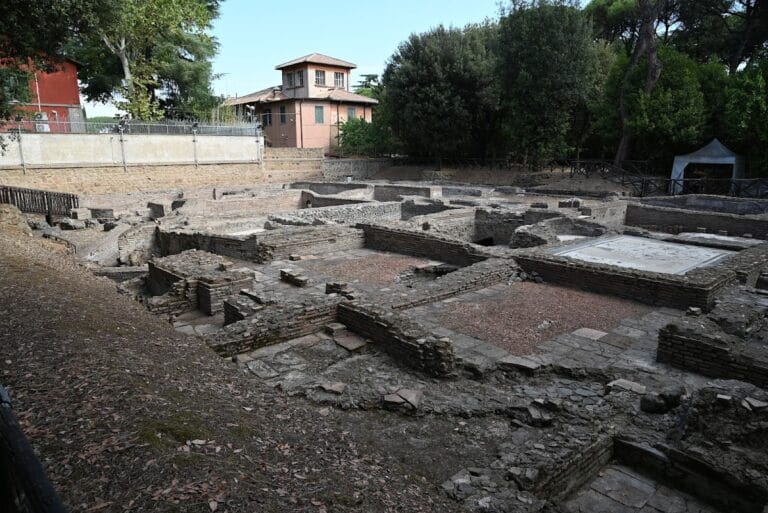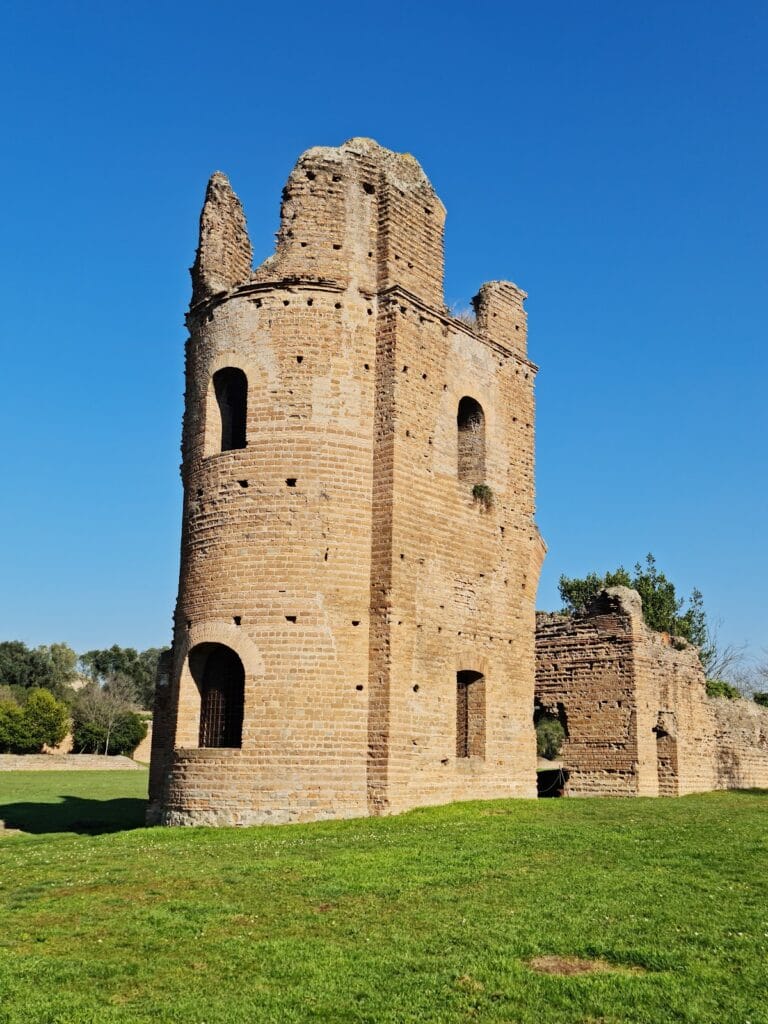Park of the Aqueducts in Rome
Overview
The Park of the Aqueducts (Parco degli Acquedotti) occupies approximately 240 hectares in southeastern Rome. It is a key part of the Parco Regionale dell’Appia Antica and preserves some of the most impressive remnants of Rome’s ancient water infrastructure. Within its boundaries are traces of seven aqueducts that once fed the imperial capital: Anio Vetus (272 BCE), Aqua Marcia (144 BCE), Aqua Tepula (125 BCE), Aqua Iulia (33 BCE), Aqua Claudia (52 CE), Anio Novus (52 CE), and Aqua Felice (1586 CE).
The most visually striking remains in the park belong to Aqua Claudia and Anio Novus, which were built in tandem and share a monumental arcade. The two aqueducts were constructed with multiple layers of arches to maintain a consistent gradient while traversing the Roman countryside. Aqua Felice, a 16th-century reconstruction using ancient foundations, reveals the continuity of hydraulic infrastructure into the early modern period.
Rome’s Aqueduct Network
Rome’s aqueduct system was one of the largest and most advanced in the ancient world. At its peak, the system delivered over one million cubic meters of water per day to public baths, fountains, latrines, and private homes. Each aqueduct was a feat of engineering, carrying water from distant springs in the Apennines and Alban Hills using a steady, gravity-driven gradient. Aqua Marcia, at 91 kilometers, was particularly renowned for its clean and cold water. Aqua Claudia and Anio Novus, monumental in scale, show the imperial ambition of the 1st century CE.
Engineering Features
The Roman aqueducts crossing the park used a combination of sub-surface channels, elevated arcades, and siphons to overcome the topographical challenges of the landscape. The average gradient was approximately 1:4800, requiring precise calculation and survey tools like the chorobates and groma. Materials varied from concrete to stone-faced brickwork, and many conduits were lined with waterproof opus signinum. Periodic inspection shafts and settling tanks were integrated into the system to maintain water quality.
The aqueducts in the park illustrate how infrastructure was harmonized with the environment. The landscape includes umbrella pines, open fields, and preserved stretches of ancient roads like the Via Latina. The man-made stream flowing through the park traces the Acqua Mariana, a medieval aqueduct that was later dismantled. This blend of natural and man-made features offers a unique view of Roman environmental management.
Archaeological Features
Beyond the aqueducts themselves, the park contains several related archaeological features:
Casale del Sellaretto: A rural farmhouse built with reused Roman materials.
Tomba dei Cento Scalini: A large 2nd-century CE tomb structure.
Campo Barbarico: Possibly linked to late Roman military encampments.
Villa dei Sette Bassi: Located just outside the park, this is one of the largest known Roman suburban villa complexes.
Decline and Reuse
Many aqueducts fell into disrepair following the decline of the Western Roman Empire in the 5th century. Invasions and a shrinking population reduced demand and disrupted maintenance. However, aqueducts like the Aqua Felice in the 16th century demonstrate how older structures were revived for renewed urban needs.
The park was officially designated as protected green space in 1965 but faced illegal construction and encroachment. Major preservation efforts in the 1970s cleared shantytowns and unauthorized gardens. Today, the site includes a pedestrian and cycling path that connects it to the Parco di Tor Fiscale and the broader Appian Way park network. Restoration work continues to stabilize ancient masonry and make the site more accessible for visitors and researchers.
Nearby sites

Villa dei Sette Bassi: An Ancient Roman Suburban Villa near Rome

Villa dei Quintili: An Ancient Roman Estate Near Rome

Capo di Bove: An Ancient Roman Estate Near Rome

Circus of Maxentius: An Ancient Roman Entertainment Complex in Rome

Villa of Maxentius: An Imperial Roman Complex on the Appian Way

